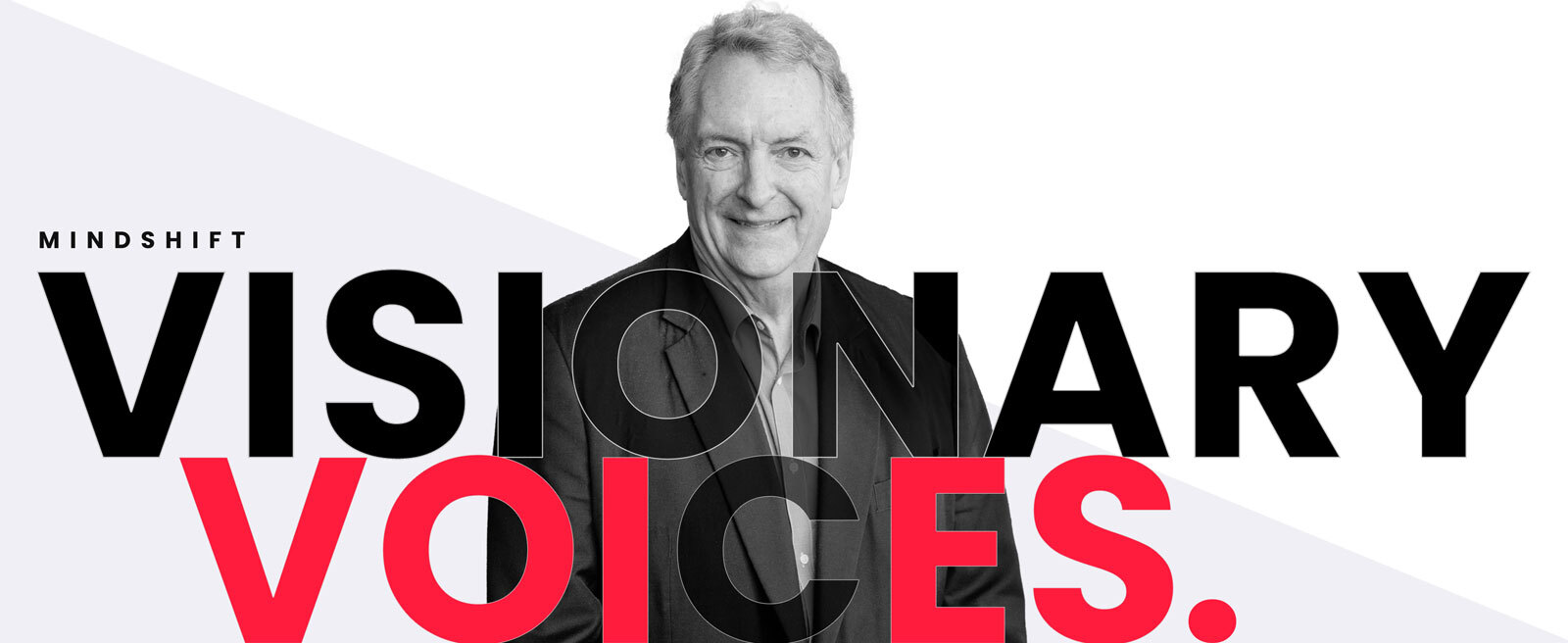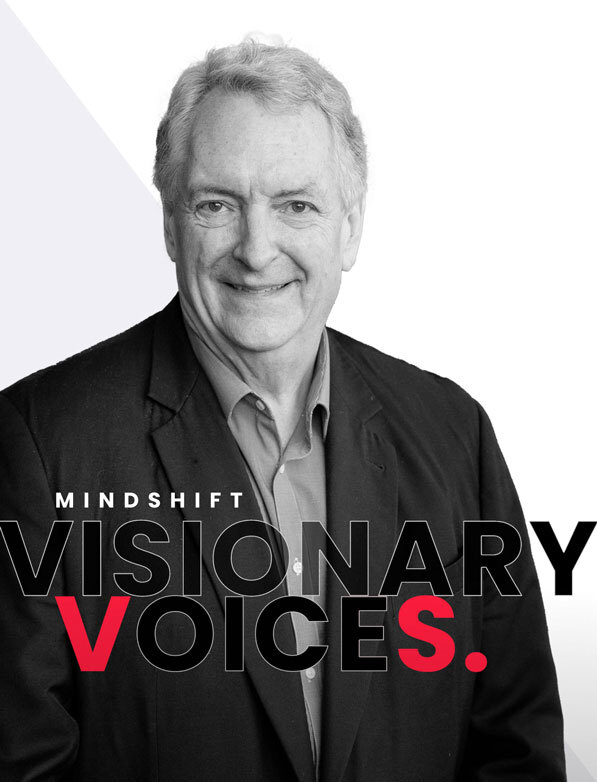

Dave Ulrich is the Rensis Likert Professor at the Ross School of Business at the University of Michigan and co-founder of the RBL Group, a consultancy that focuses on linking human capability development with stakeholder value. His work has been instrumental in making HR a strategic partner in business.
Dave sat down for a conversation with us to discuss how to build a strong culture at a moment when AI is changing just about everything in the workplace.
How AI is Raising the Bar for Leadership and Culture
What should leaders be doing now to take full advantage of AI?
Three things are essential. The first is to understand and use it, not just to automate tasks, but to generate insights, test scenarios, and guide smarter discussions. The second is to align work with what customers, investors, and communities care about, which is really redefining culture and leadership from outside in.
Finally, they need to embrace the human edge. AI can’t create meaning, build trust, or inspire action. That’s still the domain of human leaders.
Does AI change what it means to be a great leader?
AI elevates the expectations. Leaders now need to be digitally fluent, emotionally intelligent, and ethically grounded. You can’t just delegate the tech to IT or HR. Leaders must understand the basics of how AI tools work, what data they use, and what risks they carry.
At the same time, the human side becomes more important. Empathy, adaptability, and clarity are essential. AI makes leadership more transparent—patterns and outcomes are more visible. So, authenticity matters more than ever.
I’ve spent many years studying leadership, and there are five essential and timeless elements. Strategy, execution, talent development, human capability, and integrity/authenticity. You need to know what you want to do, how you’re going to do it, who’s going to be with you on the journey, who you have empowered and taught who will carry on after you’ve left, and you need to do it all in a way that inspires trust and loyalty.
Post-COVID, it’s become clear that strategy is not just about strengths, weaknesses, opportunities, threats. It’s about creating hope. And that’s what those five things do. They create hope. The practices may change, but the principles don’t.
Could you explain what you mean by redefining culture and leadership from the outside in?
Culture is the firm’s identity in the mind of its most important customers, made real by employee behavior. All companies discuss their values — integrity, service, transparency, for example — and how they form the foundation of their culture. But culture is not internal. Its purpose is to create value for the customer.
Your values, your culture, must be tested externally by asking three questions: Are these values the ones our best customers want us to have? Can customers define what those values look like in behavior? If we live those behaviors, will customers buy more from us? When that mindset happens, culture then becomes a business agenda, not a social agenda.
The Role of HR and the C-Suite in Shaping an AI-Ready Culture
That’s a radical shift for a lot of companies. What does this mean for HR, whose traditional province has been working and advocating on behalf of employees?
There are some essential mindshifts HR leaders need to make. The first is that HR is not about better internal programs for their own sake. It’s about creating value for stakeholders—customers, investors, and communities. These are all humans outside the company, not just employees inside.
HR’s real customer is not the employee—it’s the customer of the company. If we serve employees in a way that helps them serve external customers better, then we’re adding value.
HR also has to make the shift from “inside-out” to “outside-in.” Leadership shouldn’t be defined by generic competency models. Ask: “What promises have we made to customers?” Then develop leaders who can deliver those promises.
And finally, HR must embrace AI as an enabler. Human resources making use of artificial intelligence isn’t the oxymoron some people think it is. The best HR teams will combine AI’s data power with human creativity and contextual judgment.
Can you be more specific in how you see AI influencing organizational culture in the next few years, as well as HR functions?
AI means some jobs will absolutely be replaced. AI can provide vast knowledge, synthesize it quickly, and enable faster, more informed decision-making. It summarizes the past brilliantly and tells you what has been said or done, not what could be. But it doesn’t invent the future. Humans imagine what’s next.
AI is already transforming HR, and it will only accelerate. At its best, AI enhances decision-making, removes bias, increases personalization, and frees up HR professionals to focus on high-value work like leadership development and employee experience. But it also brings cultural challenges. Leaders must ensure that as we automate and scale processes, we don’t lose sight of the human aspect.
Culture is built in the spaces between processes—how we listen, how we treat people, how we communicate. AI can either enable a more personalized, inclusive experience or create distance and disconnection. The difference will lie in how intentionally leaders adopt and guide it.
The opportunity is for HR to lean deeper into culture, leadership, and employee experience. When AI handles the repetitive and routine, HR can become more strategic—designing environments where people can thrive, aligning talent with purpose, and creating space for innovation and belonging. HR should also take the lead in helping the organization navigate the ethical, cultural, and human implications of AI adoption. This means developing AI literacy within the workforce, modeling transparency, and advocating for responsible use.
How can AI help with performance management and leadership development?
It can be powerful when used thoughtfully. AI can surface trends across teams, flag engagement drops, or help managers prepare better feedback. But performance management is deeply human work. The best managers are coaches, not just scorekeepers. If AI is used to replace judgment, it backfires. If it’s used to inform better conversations, it elevates them. Again, it comes back to intentionality: Is the goal to better support people or to standardize oversight?
What role does the C-suite play in managing the cultural impact of AI?
The C-suite sets the tone. Executives must lead with clarity about what AI will and won’t do, and why it’s being adopted. This is a moment for proactive communication. If people feel that decisions are being made behind closed doors or that AI is replacing people, trust will erode.
On the other hand, when leaders explain how AI will augment human capabilities, open new opportunities, and help people grow, culture strengthens. Transparency, inclusion, and clear communication are everything.
What’s one thing every C-suite leader should do this year related to AI and culture?
Start a conversation with your executive team and board: “How are we using AI today? How does it align with the culture we want? Where are the gaps, and how do we close them?”
Then involve your people. Ask for their input, their concerns, their ideas. The future of work isn’t just about technology—it’s about trust. Use AI as a catalyst for deeper alignment, better leadership, and a culture where humans and technology thrive together.
How should boards think about AI in relation to culture and human capital?
Boards should be asking how AI strategy aligns with human capital strategy. Are we using AI to augment and empower, or to control and cut costs? What guardrails are in place to ensure ethical use? How are we training leaders and employees to engage with these tools responsibly? Boards need visibility into how AI is shaping employee experience, talent decisions, and trust. Culture and technology strategy must be in sync.



